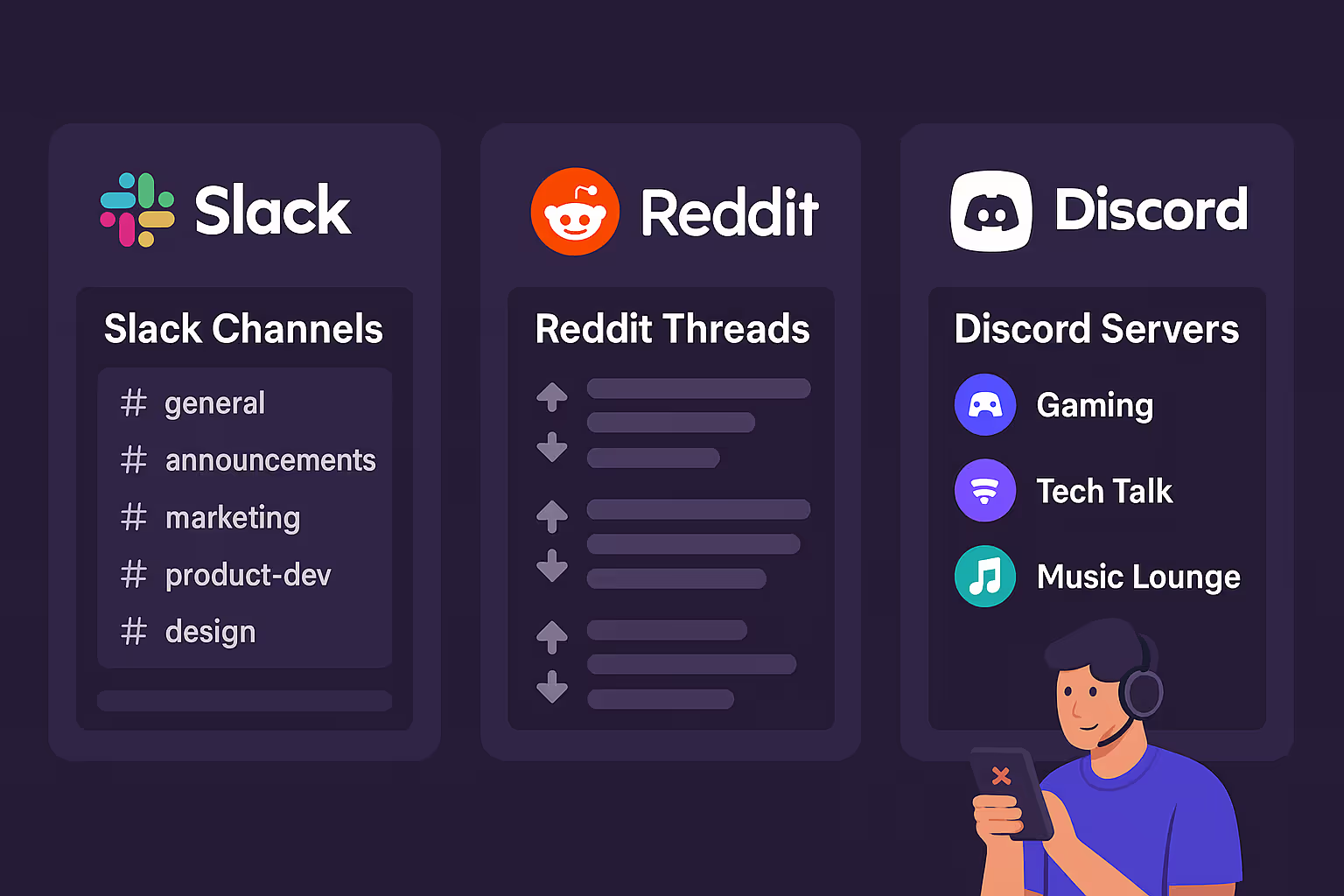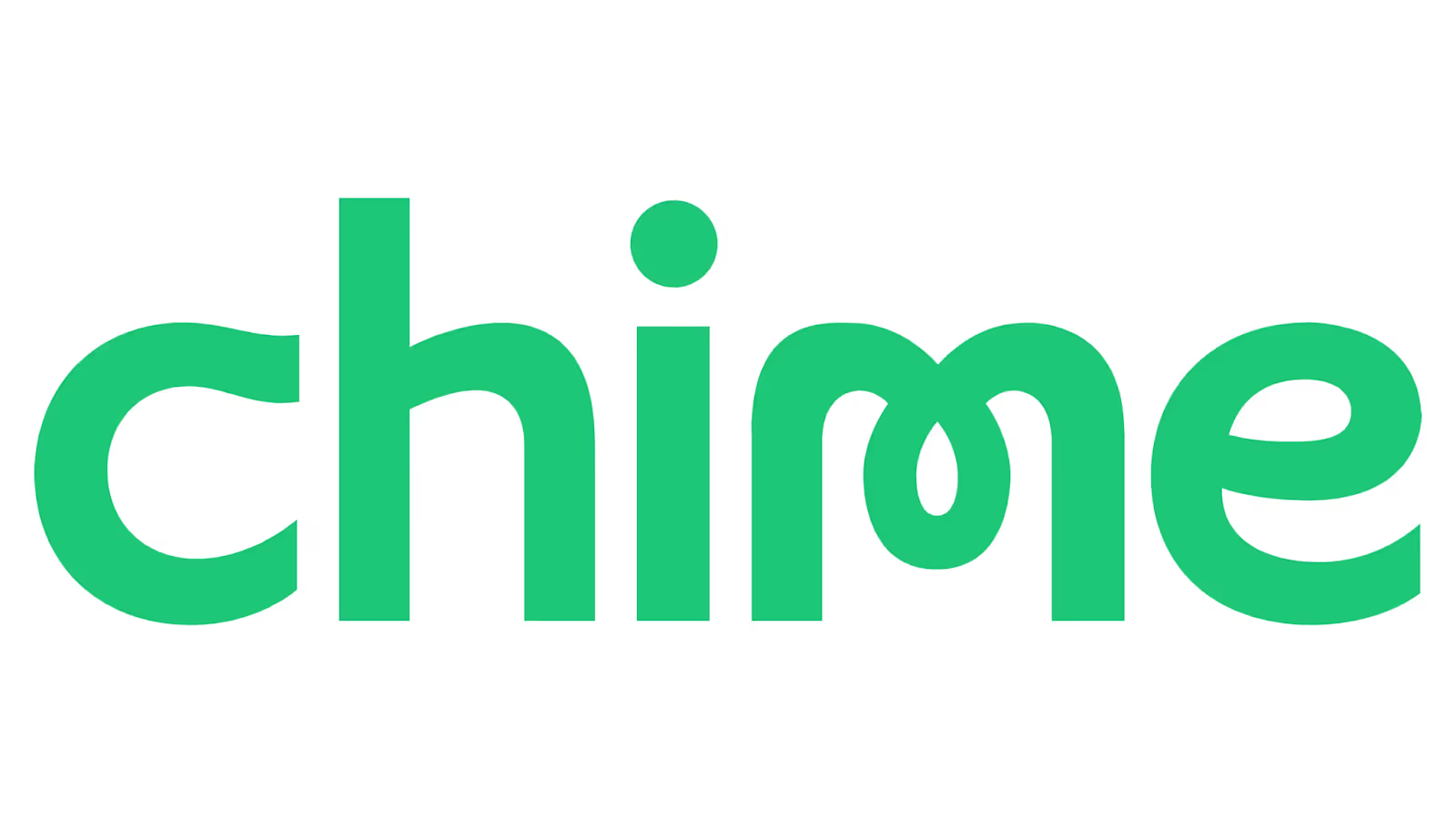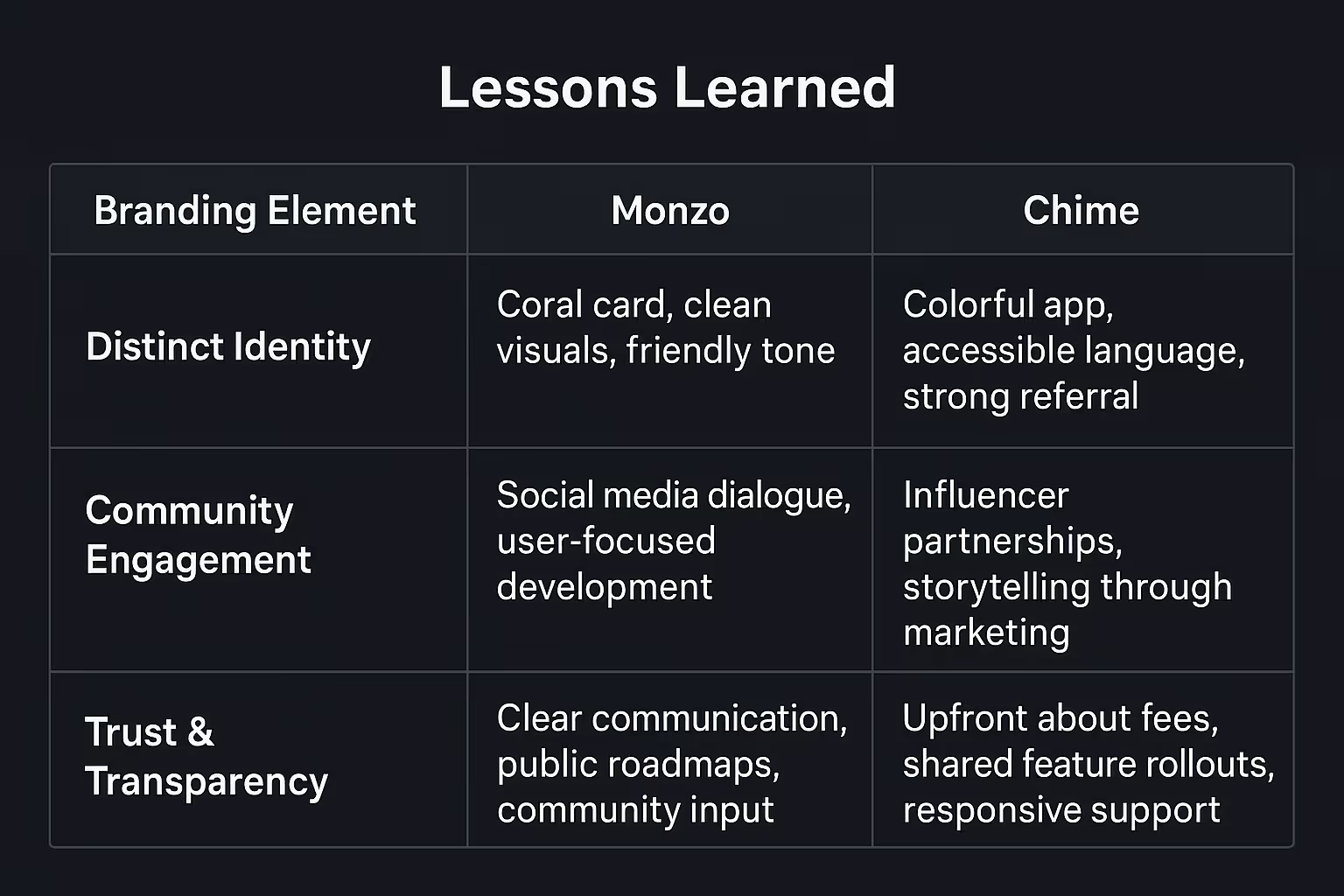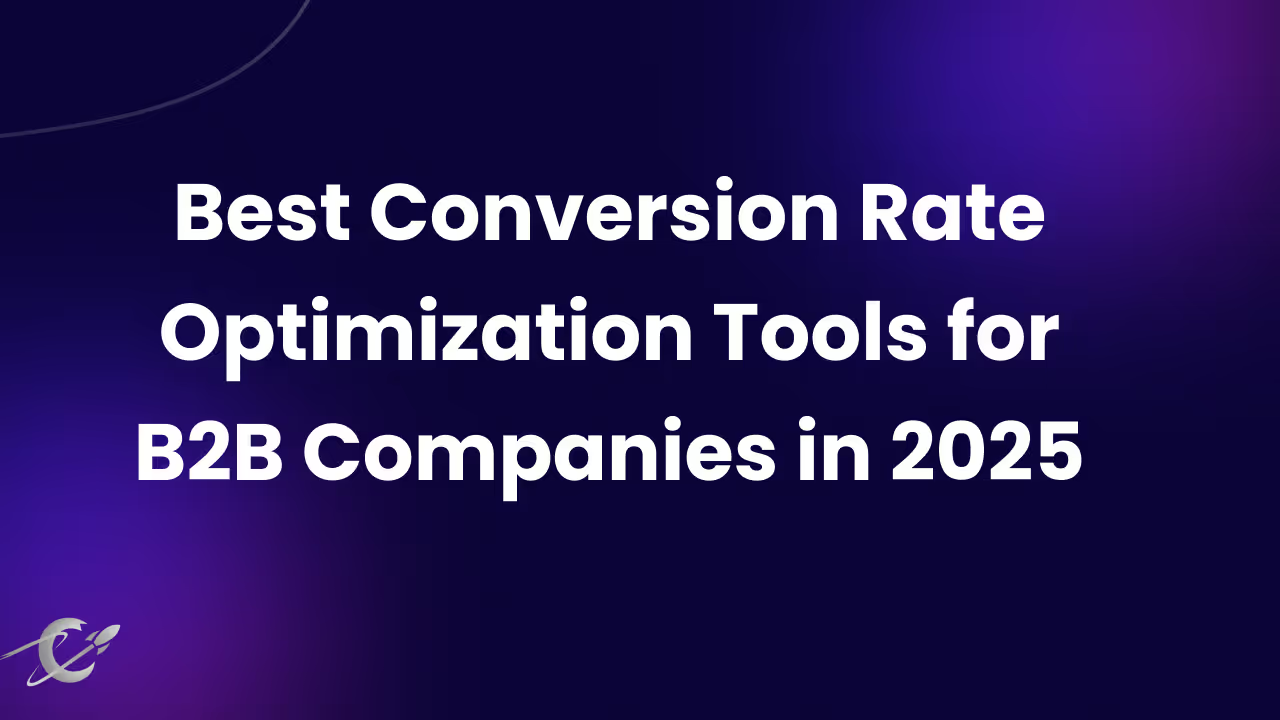Top 5 AI Optimization Agencies Helping Brands Rank in ChatGPT & AI Search
Simran Kataria

In 2024, the global fintech market was valued at a staggering USD 340 billion, and is projected to exceed USD 1 trillion by 2032—yet building trust remains its Achilles’ heel. Consumers consistently cite trust as the top factor influencing fintech adoption, more so than usability or service range. With this shift has come a new set of branding challenges and opportunities that demand a completely fresh approach.

Traditionally, trust in financial institutions was built through in-person interactions, legacy reputations, and tangible experiences like bank branches. But fintech companies don’t have these advantages. Instead, their brands live almost entirely in the digital world—on screens, in apps, and across online platforms. That means the stakes are higher, and the margin for error is razor-thin. If a fintech brand doesn’t build trust from the first click, it may never get a second chance.
Branding in this context goes far beyond choosing a logo or a clever tagline. It encompasses every touchpoint a customer has with your company, from the tone of your copy to the responsiveness of your app, and the clarity of your value proposition. It also includes how secure, transparent, and user-centric your company feels—because these elements signal whether your brand is worthy of handling people’s money.
At its core, fintech branding is about crafting an identity that signals reliability, innovation, and user empowerment. Whether you're offering banking-as-a-service, crypto wallets, peer-to-peer lending, or AI-powered budgeting tools, your brand must immediately convey credibility while standing apart from both legacy banks and the growing pool of digital challengers.
One of the main reasons fintech branding is so critical is that the industry operates in a highly regulated and high-stakes environment. Consumers are naturally cautious with their financial data, and even a single instance of poor communication, inconsistent visuals, or sluggish customer support can undermine years of brand building. That’s why fintechs must prioritize branding not as a marketing afterthought, but as a strategic imperative woven into the very fabric of their business.
In a marketplace crowded with options and powered by digital expectations, standing out requires more than functionality—it requires emotional resonance. Customers need to feel that a brand understands their financial needs, shares their values, and is committed to their long-term success. This emotional connection is what turns one-time users into long-term loyalists, and brand skeptics into brand advocates.
In the sections ahead, we'll explore the foundations of fintech branding, break down what makes it unique, and share actionable strategies to help fintech companies create a compelling, trustworthy, and enduring brand online.
Effective fintech branding begins with clarity of purpose. In a sector where trust and innovation must coexist, building a resilient brand starts by defining who you are, what you do, and why it matters. The most successful fintech brands don’t just promote a product—they communicate a mission, a set of values, and a promise to their users.
At the core of every strong fintech brand is a clearly articulated mission and vision. The mission describes the brand’s immediate goals and how it serves its audience, while the vision outlines the long-term change the company seeks to make in the financial world. For instance, a fintech company might aim to democratize access to investing or simplify banking for underbanked populations. These aren’t just slogans—they’re directional statements that guide product development, customer service, marketing, and internal culture.
The brand purpose serves as the emotional core. It’s what connects the company to its audience on a deeper level. Why do you exist beyond making a profit? In fintech, this often revolves around ideas like financial empowerment, transparency, fairness, and innovation. A clearly defined purpose can differentiate your brand from competitors and inspire customer loyalty.

Trust is the currency of fintech branding. Core values such as integrity, user empowerment, transparency, and security—must be more than buzzwords. They need to be reflected in every customer interaction, from onboarding flows to customer support scripts. These values become the backbone of your internal and external communications and help ensure consistency across departments and platforms.
When fintech companies commit to their values and live them out consistently, they create a brand that feels stable and authentic. This sense of integrity is especially important in a digital environment, where customers can’t rely on face-to-face reassurance.
The brand promise is what you commit to delivering to every user, every time. It encapsulates your unique value proposition and sets expectations. Whether it’s “secure transactions at lightning speed” or “banking without hidden fees,” the promise must be both meaningful and achievable. It should reflect your strengths and resonate with your audience’s priorities.
Brand identity, meanwhile, includes the tangible elements that make your fintech recognizable—logo, color palette, typography, voice, and imagery. But identity goes deeper than design; it’s about coherence and alignment. Every visual and verbal cue should reinforce the brand promise and values. This kind of cohesive identity builds recognition and familiarity, which are crucial in establishing credibility in a highly competitive and trust-sensitive industry.
Fintech startups that invest early in defining and refining these brand fundamentals are better positioned to adapt, scale, and thrive. As new technologies emerge and consumer expectations evolve, a clear foundation ensures the brand stays grounded and consistent—even in a fast-moving market.
Fintech brands operate in a space where the expectations of a tech-savvy audience intersect with the caution that naturally accompanies financial decision-making. Unlike other startups, fintech companies must win over customers who are not only looking for convenience and innovation but also demand unwavering trust. This combination creates a unique branding challenge that traditional tech or banking companies don’t face in quite the same way.
More than any other industry, fintech relies on trust. Consumers are handing over sensitive financial data, granting access to their personal accounts, and often entrusting companies with their long-term financial futures. One breach, glitch, or misleading message can permanently damage that trust.
That’s why fintech branding must place security and reliability at the forefront. It's not enough to be secure—you have to appear secure. Every aspect of your branding, from the language used on your landing pages to the structure of your user interface, should reassure users that their money and data are safe. Visual cues like lock icons, subtle use of authoritative colors, and clarity in terms and conditions all contribute to creating this sense of safety.
Successful fintech brands communicate their commitment to security through transparent language, easy-to-find privacy policies, and clear explanations of how user data is handled. They also align themselves with recognized standards and compliance frameworks to build credibility.
Fintech companies don’t operate in a vacuum—they must abide by strict financial regulations that vary by region, market, and product category. This adds a layer of complexity to branding efforts. It’s not just about creating a compelling narrative or visual identity; it’s also about making sure everything from your marketing messages to your customer onboarding processes are compliant.
The challenge is balancing clarity and creativity with legal requirements. For example, marketing campaigns must often include disclaimers, avoid misleading claims, and be approved by legal teams. Fintech brands must find ways to inspire trust and spark interest while staying within the bounds of financial compliance.
This can be particularly tough for startups that are used to moving quickly and iterating fast. But investing time in aligning brand communication with regulatory standards from the start prevents major reputational and operational risks down the line.
Many fintech solutions are built around cutting-edge technologies, new financial models, or emerging trends such as decentralized finance, AI-driven investment platforms, or alternative credit scoring. While these innovations may offer real benefits, they can also be confusing or intimidating to the average consumer.
This is where fintech branding takes on the role of educator. Your brand must translate technical complexity into digestible, engaging, and actionable information. That could mean explainer videos, interactive tutorials, or simply clear language in your app’s UI. The goal is to remove barriers to understanding and create an experience that feels intuitive, empowering, and helpful.
Branding in this context isn’t just about visuals—it’s about crafting narratives that demystify your product and show real-life relevance. The more accessible and understandable your offering is, the more trust and traction you’ll build.
These unique challenges require fintech brands to operate with a rare blend of creativity, precision, and responsibility.
Visual Identity: The Face of Your Fintech Brand
In a digital-first industry like fintech, visual identity isn’t just about aesthetics—it’s a key pillar of brand trust and recognition. With no physical branches or face-to-face interactions, your design elements become the first and often the only impression a customer has of your brand. This means every visual decision must serve a clear strategic purpose.
A strong visual identity begins with recognition. In an ecosystem crowded with apps, platforms, and services, your logo, color scheme, and typography should stand out while remaining consistent and appropriate for your brand's message. Simplicity is key. Clean, modern visuals not only suggest efficiency and ease of use but also enhance memorability.
A fintech brand’s visuals must convey professionalism without feeling sterile. Striking this balance can be tricky, but it’s crucial for signaling both innovation and trustworthiness. Your visual language should help users feel confident and comfortable—especially when dealing with tasks as sensitive as transferring money or applying for credit.
For example, a bright and vibrant palette might attract younger audiences seeking financial empowerment, while a subdued, minimal design might appeal to professionals looking for stable investment tools. Each choice communicates something different about your brand’s personality and target market.

Color psychology plays a significant role in fintech branding. Blue, for example, is commonly used for its associations with trust, stability, and intelligence—qualities essential for financial platforms. Green suggests growth and financial health, while warmer colors like orange or yellow can inject friendliness and optimism, often useful for consumer-facing apps.
Typography should be legible and clean across devices. Modern sans-serif fonts tend to dominate fintech platforms for good reason—they feel current, easy to read, and efficient. But beyond readability, font choices should align with the tone of your brand. A bold, geometric font might communicate confidence and disruption, while a softer, rounded typeface could suggest approachability and support.
Iconography adds another layer of meaning and usability. Fintech interfaces can involve complex actions—viewing reports, moving funds, managing budgets—so icons must be intuitive and universally understood. Well-designed icons reduce cognitive load and enhance user confidence, making the digital experience smoother and more engaging.
With users interacting across websites, apps, wearables, and even voice assistants, visual consistency across platforms is non-negotiable. A brand that looks and feels different from one channel to another can confuse users and erode trust. Cohesive branding creates familiarity, reinforces recognition, and assures users that they’re engaging with the same reliable platform—no matter the medium.
Consistency doesn’t mean being rigid. Your brand should be flexible enough to adapt across formats while maintaining a unified look and feel. This includes adapting designs for light and dark modes, responsive layouts for different screen sizes, and even adjustments in icon size or placement that respect platform-specific norms.
In short, your visual identity is a strategic tool for building trust, clarity, and emotional connection. When crafted with intention and executed consistently, it becomes a silent ambassador that communicates your brand’s values long before a user reads your mission statement.
In the fintech world, a brand isn’t just what you say—it’s what users experience every time they interact with your product. Since most fintech companies operate entirely online, the digital experience is the brand. From onboarding to account management to customer support, every interaction reflects your company's identity and values. This means that building a strong digital-first brand isn’t optional—it’s fundamental to success.
User experience (UX) and user interface (UI) design are central to how your brand is perceived. A cluttered interface, slow load times, or confusing navigation can damage your credibility, no matter how great your product is. Conversely, a well-designed platform that feels intuitive, smooth, and user-focused reinforces trust and professionalism.
UX/UI is no longer just a technical consideration. It’s a strategic branding tool. When your product is easy to use and aesthetically consistent, it demonstrates that your company values the user’s time and needs. That alone can differentiate your fintech brand in a saturated market.
Consider the impact of a seamless onboarding process. Instead of overwhelming new users with complicated forms, a good onboarding flow uses smart defaults, clear language, and interactive prompts to ease them in. The goal is to reduce friction and create a first impression that feels both empowering and effortless.
A true digital-first brand delivers consistency at every digital touchpoint. Whether users are accessing your service through a mobile app, website, smartwatch, or even voice assistant, they should experience the same tone, functionality, and design coherence.
These seamless interactions extend beyond the interface. Timely notifications, branded chat support, and contextual micro-interactions all contribute to how your fintech brand is perceived. Something as small as a friendly, well-timed confirmation message can reinforce a sense of care and attentiveness.
Another area where seamlessness matters is feature integration. Many fintech platforms offer multiple services—budgeting, lending, investing, payments—all in one place. A fragmented experience where each service feels like a separate app confuses users and weakens the brand. On the other hand, a unified design and interaction model builds credibility and keeps users engaged.
Personalization is no longer a luxury in digital finance—it’s expected. A modern fintech brand must be able to tailor its experience to the individual user. That means anticipating needs, surfacing relevant features, and customizing communications based on behavior and preferences.
For example, offering smart budgeting tips based on spending habits or nudging users toward savings goals based on previous activity shows that your platform is paying attention. These moments deepen the user relationship and transform your service from a generic tool into a trusted partner in their financial journey.
Predictive design goes even further. By using machine learning and data analytics, fintech platforms can preemptively solve problems, flag anomalies, or suggest actions—all without the user needing to ask. This proactive engagement enhances both usability and brand affinity.
In a landscape where users are comparing experiences across industries—not just within finance—fintech brands must meet the standard set by digital leaders in retail, streaming, and social media. That means offering not just functionality, but elegance, personalization, and delight.
While visual identity and seamless digital experiences shape the appearance of a fintech brand, it’s the brand voice that gives it personality. Your voice defines how you communicate with users and how they feel about you—not just in marketing, but across every interaction, from app notifications to customer service responses.
In a digital landscape where face-to-face interaction is minimal or non-existent, voice becomes one of the most powerful tools to humanize your fintech brand and connect with customers on an emotional level.
An authentic brand voice starts with clarity about your values and your audience. Are you speaking to first-time investors looking for clarity and reassurance? Or to tech-savvy millennials eager for innovation and efficiency? Your voice should reflect the needs, preferences, and emotional state of your users.
Tone doesn’t mean being overly casual or formal—it means being intentional. A fintech brand that prides itself on accessibility might use friendly, encouraging language. A platform aimed at professionals might lean into confidence and precision. The key is consistency. Whether a user is reading your website, chatting with support, or getting an email notification, the tone should feel cohesive and familiar.
This consistency extends across formats and departments. Marketing, product, support, and leadership should all speak in a unified voice. Without it, you risk sounding fragmented or insincere, which can undermine the trust fintech brands work so hard to build.
Your team is an extension of your brand. That includes not only your designers and marketers but also developers, customer service agents, and social media managers. Everyone who touches the customer experience must understand the brand voice and know how to apply it.
This doesn’t require rigid scripts. Instead, provide guidelines that outline key phrases, tone characteristics, and examples of both “on-brand” and “off-brand” communication. Regular workshops or training sessions can reinforce these principles and help teams apply them naturally in their day-to-day work.
A well-defined voice helps prevent inconsistencies that can confuse or alienate customers. For instance, a cheerful onboarding email followed by a stiff or overly technical support response creates a jarring user experience. When every touchpoint feels aligned, your brand feels reliable and trustworthy.
An authentic voice does more than convey information—it builds relationships. It helps users feel seen, understood, and supported. This emotional connection can be a key differentiator in a space where most financial products offer similar core features.
Resonant messaging starts with empathy. Recognize the emotional context of financial decisions. People aren’t just transferring funds—they’re saving for homes, paying off debt, or trying to start a business. Speak to those moments with care, understanding, and encouragement.
Clear, jargon-free language also plays a vital role. Financial topics can be intimidating, so fintech brands that communicate clearly and simply reduce friction and build confidence. This transparency signals respect for the user and aligns closely with the trust-centric nature of the industry.
Ultimately, your voice should feel like an extension of your values—a reflection of who you are and what you stand for. It should help users navigate your product, understand your purpose, and feel good about choosing your platform.
In fintech branding, data might drive your product, but it’s stories that create emotional connections. A compelling brand story bridges the gap between your company’s technical capabilities and your audience’s personal aspirations. It offers context, meaning, and relatability in an industry often perceived as complex or impersonal.
A fintech brand’s story isn't a marketing gimmick—it’s a strategic tool that builds trust, differentiates you from competitors, and communicates your values in a way that resonates deeply with users.
Fintech services often revolve around deeply personal matters—managing debt, saving for the future, supporting families, or pursuing independence. Storytelling helps humanize these financial decisions by highlighting real people and real outcomes. It transforms your product from a utility into a partner in someone’s journey.
Start by anchoring your story in a clear “why.” Why was the company founded? What gap in the market did it aim to address? What problem does it solve that traditional institutions couldn’t? Stories that speak to a founder’s personal frustration with legacy banking or a mission to make financial tools more accessible tend to resonate strongly, especially with younger audiences.
Make sure your story also captures the “how”—not just your technology, but your approach. Show how your brand simplifies, empowers, or supports users in moments that matter. When users see themselves reflected in your narrative, they’re more likely to form an emotional connection.
A powerful brand story often starts with the company’s origin. Whether it began in a garage, at a kitchen table, or inside a corporate innovation lab, the founding story sets the tone for everything that follows. It demonstrates purpose, persistence, and personality—three essential ingredients for a fintech brand that aims to stand out.
Beyond your internal story, include the voices of your users. Testimonials, case studies, and user-generated content add authenticity to your brand narrative. These stories show how real people use your platform to achieve financial goals or solve daily challenges, turning abstract features into relatable benefits.

Featuring diverse voices—students, entrepreneurs, freelancers, retirees—also highlights your brand’s inclusivity and broad relevance. These individual experiences reinforce the idea that your fintech brand is a trusted companion in different life stages and financial contexts.
Today’s consumers are value-driven. They want to know not just what your brand does, but what it stands for. Your story should make it clear how your fintech company contributes to a bigger picture. Are you working to promote financial literacy? Supporting underserved communities? Reducing financial inequality?
By articulating and demonstrating your brand’s impact, you attract customers who share those values—and create opportunities for advocacy, loyalty, and organic growth. Fintech brands that lead with purpose often inspire deeper trust and foster stronger emotional bonds than those that focus solely on features or pricing.
Authenticity is key. Your story must be rooted in truth, backed by action, and reflected in every customer touchpoint. A brand that tells a great story but fails to live up to it quickly loses credibility.
Trust is not a branding accessory in fintech—it is the very foundation upon which every customer relationship is built. When users are sharing their financial data, linking their bank accounts, or relying on your service to manage their money, they’re placing a high level of faith in your platform. This trust must be earned through clear communication, demonstrable security practices, and a brand culture rooted in transparency.
Fintech users are savvy. They don’t just want to be told their data is secure—they want to understand how. Effective branding includes straightforward explanations of the systems, protocols, and practices that protect user information. This could include highlighting encryption standards, multi-factor authentication, fraud monitoring, or compliance with regional financial regulations.
The key is clarity. Avoid overly technical language that might confuse or alienate your audience. Instead, use plain language and visual aids, like icons or diagrams, to show how security is built into the user experience. When your platform is transparent about what it does to keep users safe, it reinforces a sense of reliability and professionalism.
Proactively surfacing this information—on onboarding screens, in FAQs, or through educational content—can also differentiate your brand. It positions your fintech company as one that doesn’t just meet standards but goes out of its way to communicate them in a customer-first manner.
Transparency goes beyond cybersecurity. It’s about being honest and clear about how your fintech operates, makes money, and manages user data. This includes outlining fee structures, explaining terms and conditions in accessible language, and disclosing any partnerships or affiliations that impact users.
The goal is to eliminate surprises. When customers understand exactly what to expect, from pricing to product limitations, they’re more likely to trust your brand—and stay loyal to it. Unclear terms, hidden charges, or unexpected changes in service can quickly erode hard-earned credibility.
Some fintech companies build transparency into their brand identity through content strategies like public product roadmaps, open financial disclosures, or user feedback forums. These efforts show users that their voices matter and that the brand is accountable to its community.
Trust doesn’t develop overnight—it’s cultivated through repeated, positive interactions. Consistency across channels, messages, and experiences helps reinforce that your fintech brand is stable, dependable, and serious about its role in people’s financial lives.
This means that your website, app, emails, push notifications, and even support chat should feel unified. The tone, visual identity, response times, and functionality must align to create a cohesive experience. If your mobile app feels sleek and modern but your desktop interface is clunky and outdated, users may begin to question your overall reliability.
Consistency also applies to how you handle mistakes or service interruptions. Brands that communicate transparently during outages, take ownership of problems, and update users clearly are more likely to preserve trust even when things go wrong.
Building trust through transparency and security isn’t a one-time campaign. It’s an ongoing commitment that must be embedded in every decision, every feature, and every interaction. When done well, it becomes a defining characteristic of your brand—one that turns cautious visitors into confident, long-term users.
In the rapidly growing and highly competitive fintech market, having a strong product isn’t enough. What makes your company truly stand out is your unique value proposition—the clear, concise message that explains why someone should choose your brand over another. A well-crafted USP speaks directly to your target audience’s needs, showcases your strengths, and forms the backbone of your brand positioning.
Many fintech brands succeed by emphasizing one or more key areas that customers value most: innovation, affordability, and customer support.
Innovation is often a defining trait in fintech branding. Whether it’s AI-driven investing tools, instant payments, or blockchain-powered savings products, technological advancement signals forward-thinking and efficiency. A fintech company that offers features customers can’t find elsewhere—especially ones that improve speed, control, or personalization—should make those features the heart of its USP.
Affordability is another core selling point. Fintech has disrupted the traditional financial landscape by eliminating or reducing the fees that often come with legacy banks. Transparency around pricing, along with clear communication about cost-saving benefits, appeals strongly to budget-conscious users. If your platform removes hidden charges, offers competitive exchange rates, or simplifies financial access, highlight that clearly and consistently.
Customer support, though less flashy, is often a critical differentiator. In a space where many services are digital-only, fast and empathetic support becomes a key trust builder. Fintech brands that provide live chat, human advisors, or intuitive help centers gain an edge with users who may feel overwhelmed by financial decisions or digital tools. If your platform makes customer care a priority, say so—and back it up with proof.

The right USP doesn’t just help you stand out—it drives conversion. In the crowded fintech space, customers are often comparing multiple solutions. A clearly communicated USP gives them a reason to stop scrolling and start signing up. It should be instantly visible on your homepage, app store listing, and social media channels.
Effective USPs are specific and benefit-focused. Instead of vague claims like “better banking,” a compelling USP might say, “Get paid two days early and pay no overdraft fees—ever.” That’s tangible, valuable, and easy to understand.
The best USPs also reflect the values and aspirations of your audience. If your users care about financial independence, your message should speak to empowerment. If they care about simplicity, show them how your product reduces friction. The alignment between what you offer and what your audience desires is where brand loyalty begins.
It’s also important that your USP isn’t static. As your product evolves and user needs shift, revisit your positioning to ensure it remains relevant. The fintech landscape changes fast, and what sets you apart today may become table stakes tomorrow.
Social media has become a cornerstone of fintech branding. It's no longer just a promotional channel—it’s a critical platform for building trust, educating users, humanizing your brand, and fostering a sense of community. In a space as sensitive and complex as finance, social media allows fintech brands to be transparent, accessible, and consistent in ways traditional marketing cannot.
Many fintech brands make the mistake of treating social media as a one-way channel for announcements. But users expect dialogue, not monologue. The most effective fintech companies use platforms like Instagram, LinkedIn, Twitter, YouTube, and even TikTok to engage in real-time conversations with their audience.
This includes responding to questions, participating in trending discussions, and offering educational content that adds real value. When you treat social media as a platform for service and support, not just sales, your brand becomes more approachable and trustworthy.
Each platform serves a different purpose. LinkedIn might be your go-to for thought leadership and professional updates, while Instagram and TikTok are ideal for showcasing user stories, simplifying complex topics, or highlighting your brand’s personality. The key is tailoring your message and tone to fit the platform and the expectations of its audience.
Fintech brands have increasingly turned to influencers—not just celebrity endorsers, but credible voices in personal finance, entrepreneurship, and tech. These influencers bring authenticity and can help demystify your products through tutorials, reviews, or personal stories.
Partnering with the right influencers can extend your reach, especially among younger demographics who may be exploring financial tools for the first time. The value here lies in trust by association. A recommendation from a well-respected voice can carry more weight than a paid ad or press release.
Beyond influencers, community-driven branding is a powerful strategy. This could include hosting webinars, creating user groups, or featuring customer stories. Platforms like Reddit, Discord, and Facebook Groups offer spaces for users to connect with your brand and each other—building loyalty and fostering feedback.
When your users feel like part of a community rather than just customers, your brand becomes more resilient and more likely to be shared organically.

Social media also comes with risk—users can (and will) air grievances publicly. How your brand responds to negative feedback is a major test of its values and tone. Ignoring or deleting complaints can erode trust, while thoughtful, respectful responses often enhance your reputation.
Brands that handle criticism with transparency, empathy, and accountability can turn dissatisfied users into loyal advocates. Posting updates about product changes inspired by user feedback or acknowledging when things go wrong humanizes your brand and builds long-term credibility.
Consistency in voice and response time also plays a role. If a user hears one message from support and a different one on Twitter, confusion and distrust can grow. That’s why aligning your social strategy with your overall brand voice and internal policies is crucial.
In fintech, where trust, clarity, and education are paramount, content marketing does more than attract attention—it establishes your brand as a knowledgeable, credible, and helpful presence in a customer’s financial life. By offering valuable insights and practical resources, content marketing becomes a core part of the branding strategy that supports awareness, loyalty, and long-term engagement.
Written content remains a powerful tool in fintech branding. Well-crafted blog posts can help break down complex topics like credit scores, digital wallets, investment strategies, or the basics of decentralized finance. These posts don’t just inform—they demonstrate that your brand understands the user’s concerns and is equipped to guide them through the financial landscape.
But written content is just the beginning. Fintech audiences—especially younger demographics—often prefer video formats. Explainer videos, customer stories, behind-the-scenes content, and animated guides can deliver value quickly and memorably. Short, informative videos can also be repurposed for social media, amplifying their reach.
Interactive content—such as calculators, budget planners, quizzes, or financial health assessments—offers another layer of engagement. These tools invite users to participate, not just consume, which deepens brand interaction and strengthens recall.
Whatever the format, the content should reflect your brand’s tone and values. Whether your identity is empowering, empathetic, or innovative, the language, visuals, and pacing should reinforce that personality at every turn.
Many fintech products introduce users to new technologies or unfamiliar financial strategies. That makes education a necessary function—not just a branding opportunity. Brands that take the time to teach their users position themselves as guides and partners, not just service providers.
Educational content can take many forms, from “how-to” articles and product walkthroughs to newsletters and webinars. The aim is to empower your users with enough understanding to feel confident using your product—and to trust the brand behind it.
Over time, this builds authority. If users know they can turn to your platform for reliable, up-to-date information on managing their finances, they’re more likely to return, share, and advocate for your brand. This also plays a role in SEO, as search engines reward content that answers real questions with clarity and relevance.
Effective content marketing also boosts discoverability. Targeted keyword research, internal linking, and topic clustering help your content appear in search engine results, bringing new users to your platform organically.
Beyond SEO, content is a stage for thought leadership. By publishing opinion pieces, market analysis, or future-focused insights, your brand can lead industry conversations. This not only enhances credibility but also attracts partnerships, media attention, and investor interest.
For founders or executives, guest posting on reputable platforms or speaking at virtual events can further extend the brand’s reach and authority. These contributions serve as endorsements of the brand’s vision, values, and expertise.
Content marketing isn’t a short-term tactic—it’s a long-term investment in brand equity. Fintech companies that prioritize informative, user-centric content create a foundation for trust and engagement that transcends individual features or campaigns.
In the fintech space, branding isn’t a one-time effort—it’s a living, evolving relationship between the company and its users. One of the most effective ways to maintain and refine that relationship is by actively collecting, analyzing, and responding to customer feedback. This not only strengthens the brand in the eyes of your users but also ensures that your offerings stay relevant and competitive.
Customer feedback gives your brand direct insight into what’s working, what’s confusing, and what needs improvement. When users take the time to share their experiences—whether through app store reviews, support chats, surveys, or social media—they’re giving you a blueprint for enhancing the product and experience.
Fintech brands that listen—and respond—are more likely to earn loyalty. This means more than just acknowledging feedback. It’s about showing that input drives change. If users request a new feature or complain about a pain point, addressing it publicly and transparently demonstrates that your brand values their input and acts on it.
Closing the feedback loop also boosts credibility. For example, publishing changelogs that highlight user-suggested updates or sharing roadmaps shaped by customer insights makes your brand more transparent and user-centric.
Modern fintech branding is not built in isolation. The most successful brands treat their users as co-creators, inviting them into the decision-making process. This could mean running beta programs, hosting community Q&As, or crowdsourcing ideas for product names or features.
Communities can exist in many forms—Slack channels, Reddit threads, Discord servers, or branded forums. By creating a space for users to connect with each other and your team, you deepen engagement and foster a shared identity around your brand.

This participatory approach builds more than brand equity—it builds advocates. Users who feel heard are more likely to become ambassadors, sharing your product with others and defending it when issues arise. That kind of organic growth is difficult to manufacture through marketing alone.
The tone you use when responding to feedback also matters. Even when dealing with complaints, maintaining empathy, clarity, and professionalism reinforces your brand values. A frustrated customer who’s met with genuine support can walk away more loyal than they were before the issue.
Feedback isn’t just for fixing what’s broken—it’s a pathway to innovation. Listening to your users can reveal emerging needs, uncover missed opportunities, and help you anticipate where the market is headed.
In a digital ecosystem saturated with content and options, third-party validation can go a long way in building brand credibility. For fintech brands, partnering with influencers and industry experts offers a strategic way to reach new audiences, establish trust, and position the brand as a forward-thinking authority in financial innovation.
Influencers are not just social media personalities. In fintech, they often include financial educators, fintech analysts, startup mentors, and niche content creators who have earned the trust of specific user communities. Their voices carry weight because they have established authority and a track record of providing value.
Partnering with these influencers gives your brand access to engaged audiences that may be hard to reach through traditional advertising. Whether it's through YouTube reviews, LinkedIn articles, podcast interviews, or Instagram stories, these collaborations can generate awareness and encourage trial by showcasing your product in a credible, relatable context.
Thought leadership collaborations—such as co-hosted webinars, joint reports, or co-authored blog posts—go a step further. These partnerships associate your brand with expertise and innovation, elevating your profile in both consumer and industry circles. They can also position your team as knowledge leaders, increasing visibility among investors, regulators, and other stakeholders.
The key to effective partnerships lies in authenticity. Influencers should align with your brand’s values, voice, and mission. Mismatched collaborations may feel forced or insincere, which can damage trust rather than build it.
Working with industry experts helps bridge the credibility gap that many fintech startups face—especially those that don’t yet have years of customer trust or market tenure. When an experienced voice vouches for your brand, it reduces perceived risk for new users.
Credibility is also enhanced through association. Collaborations with respected names in finance, technology, or design can create a halo effect around your brand. For instance, endorsements from well-known UX designers, data privacy advocates, or compliance professionals can reassure users that your fintech brand takes user experience and security seriously.
These partnerships also open doors to earned media opportunities. Expert commentary can lead to invitations to speak at fintech conferences, contribute to major industry publications, or be included in reports on fintech trends. This kind of exposure reinforces your brand’s legitimacy and deepens its industry footprint.
To maximize the impact of influencer and expert collaborations, fintech brands should ensure alignment across all communication touchpoints. Campaign visuals, product features, and user experience should echo the messages delivered by your partners, creating a cohesive and convincing narrative.
In a competitive and fast-evolving space like fintech, branding cannot rely on assumptions or static strategies. To remain effective and resonate with users over time, brand performance must be continuously measured, analyzed, and refined. Data-driven brand optimization allows fintech companies to make informed decisions, track impact, and evolve in step with user expectations.
Understanding how your brand is perceived begins with measuring brand awareness and sentiment. These metrics help gauge how familiar users are with your brand and whether they associate it with positive, neutral, or negative emotions.
Tools like social listening platforms, brand mention trackers, and sentiment analysis software offer insights into how your brand is discussed online. These platforms can analyze user conversations across social media, forums, and review sites to highlight emerging trends, recurring complaints, or positive buzz.
Surveys and Net Promoter Score (NPS) tools are also valuable. They provide direct feedback on how users feel about your product and whether they would recommend it to others—a clear indicator of brand strength.
Tracking these metrics over time helps identify whether branding efforts are increasing visibility and trust, or if adjustments are needed to better align with your audience’s needs and perceptions.
To optimize your brand effectively, you need a framework of key performance indicators (KPIs) that reflect both strategic goals and user engagement. These may include:
Tracking these KPIs in a dashboard format enables your marketing, product, and leadership teams to monitor trends and react quickly.
Analytics also play a key role in understanding which elements of your branding resonate best. A/B testing landing pages, content formats, ad creatives, and messaging can reveal what drives engagement and conversions. These insights allow your team to double down on what works—and move away from what doesn’t.
Ultimately, brand optimization is not just about reacting to metrics—it’s about anticipating change. Fintech companies that regularly review performance data, study user behavior, and refine their branding accordingly are far more likely to maintain relevance and loyalty in a crowded, dynamic marketplace.
The fintech landscape is defined by rapid change—technological innovations, evolving regulations, shifting user expectations, and increasing competition. In such a volatile environment, brands that remain static quickly lose relevance. Future-proofing your fintech brand means building a foundation that is not only strong today but flexible enough to adapt to tomorrow.
Staying current with trends isn’t just about aesthetics or new features—it’s about understanding how broader shifts in technology and consumer behavior affect your users' financial lives. From AI-driven financial tools to blockchain, voice interfaces, and embedded finance, the tools customers use—and the way they expect to use them—are evolving.
Your brand should reflect an awareness of these shifts. That might mean offering content that demystifies new technologies, redesigning your platform to support emerging devices, or adjusting your voice and tone to better connect with younger, digital-native users.
It's equally important to monitor shifts in cultural and societal values. Fintech users increasingly expect brands to demonstrate ethical practices, inclusivity, and environmental responsibility. Brands that fail to align with these expectations may struggle to build loyalty, regardless of product quality.
A future-ready brand is one that not only embraces new technologies but integrates them in a way that enhances the user experience without compromising on clarity, consistency, or trust.
As your fintech company grows, your branding must be scalable. What works for a small user base or a regional market might not hold up globally or under a larger, more diverse audience.
Scalable branding starts with a clear, modular brand system—one that includes flexible design components, adaptable messaging frameworks, and cross-platform guidelines. This ensures that your brand remains cohesive, even as new products, services, or teams come online.
Agility is another essential component. Fintech brands must be able to pivot quickly in response to market changes, whether that’s adjusting a campaign message, responding to new regulations, or rolling out new features. Brands with rigid structures and slow approval processes often struggle to respond in time, putting their relevance and credibility at risk.
An agile brand also encourages a culture of experimentation. By testing new ideas in small segments—whether it’s a visual refresh, a tone shift, or a new feature announcement—you can gather real-time feedback and adapt with confidence.
Future-proofing also means maintaining strategic clarity. Your core values, purpose, and promise should remain constant, even as tactics and tools evolve. This consistency provides a steady brand anchor while allowing for creative evolution.
Below are real-world examples showcasing how fintech brands have successfully leveraged branding strategies to build trust, scale, and recognition.

Monzo’s visual and community branding set it apart early on. Known for its standout coral debit card, clean app design, and jargon-free social media tone, Monzo created a memorable presence that resonated especially with tech-savvy millennials and Gen Z users
Monzo’s cohesive combination of distinct visual identity, clear voice, and community engagement demonstrates a strong blueprint for fintech branding.
Chime has become one of the fastest-growing fintech brands in the United States by combining fee transparency, digital-first design, and smart marketing.

Chime’s strategy shows that fintech brands can reach scale by combining user-centered product features with transparent and community-based marketing.

These brands exemplify how fintech branding extends beyond logos and ads—it’s about weaving trust, clarity, and user-centric values into every interaction, from onboarding to social media presence. Their success offers a strategic roadmap for fintech startups aiming for long-term brand growth.
Building a fintech brand that inspires trust, communicates clearly, and adapts to changing markets is a complex undertaking. While some companies manage this internally, many benefit significantly from partnering with specialized branding agencies that understand both the financial sector and digital-first consumer behavior.
A fintech branding agency offers more than design work. The best agencies bring strategic expertise that bridges your business objectives with brand communication. This includes:
Beyond these foundational elements, branding agencies also help with execution—rolling out your brand identity across platforms, redesigning websites and mobile apps, and launching campaigns that align with your new or updated branding.
What sets fintech branding apart is the need for security, clarity, and usability to coexist with aesthetics and storytelling. A good agency understands how to balance regulatory constraints with creative freedom to deliver impactful branding that works across every digital touchpoint.
In today’s landscape, fintech branding lives across many digital surfaces—apps, websites, customer emails, push notifications, social channels, and even virtual assistants. A specialized agency helps ensure that your brand experience is seamless across all of them.
This ecosystem approach includes:
Agencies also bring the benefit of scalability. As your company grows, they can help refresh your brand, localize it for new markets, or expand it to support new product lines or user segments.
By collaborating with a branding agency early in your company’s life cycle—or during a growth or rebrand phase—you gain the clarity, consistency, and creative energy needed to compete at the highest level in a crowded and fast-moving market.
Fintech branding must simultaneously convey innovation and trust. Unlike most tech startups, fintechs deal with sensitive financial data, which means customers demand a higher level of transparency, security, and credibility. At the same time, these companies must differentiate themselves from legacy banks by appearing agile, modern, and user-focused. Balancing these elements through visual identity, tone, and customer experience is what sets fintech branding apart.
Startups may lack the budget of traditional banks, but they can still compete by being focused, authentic, and nimble. Clear messaging, a distinct design language, and a laser-sharp value proposition allow smaller fintech brands to punch above their weight. Startups often benefit from closer customer relationships, faster innovation cycles, and stronger community engagement—all powerful brand-building tools when used strategically.
Not necessarily, but it can significantly accelerate the process and increase effectiveness. Branding agencies bring external perspective, creative expertise, and deep knowledge of how fintech audiences behave. If your internal team lacks design or marketing capacity, or if you’re looking to scale or rebrand, working with a specialist agency ensures your brand is built to perform across all touchpoints, from UX to advertising.
A few frequent pitfalls include:
Avoiding these missteps starts with putting the user at the center of every branding decision and maintaining consistency across all channels.
Brand performance can be tracked through a combination of qualitative and quantitative metrics, such as:
Over time, you should see improvements in user acquisition, retention, and referral—key indicators that your brand is resonating.
App design is critical—it’s often the main point of contact between your brand and your users. A poorly designed app undermines even the best branding strategy by creating frustration and eroding trust. In contrast, a well-designed app reinforces your brand’s values and voice through every screen and interaction.
If you're looking to build or elevate a trustworthy, user-centric fintech brand, working with experts like Ballistic Design Studio can help. With deep expertise in fintech UX and digital branding, Ballistic partners with high-growth companies to create seamless, engaging, and scalable digital experiences that make a lasting impact.




Wait, don't go! 100% Free - Unlimited Webflow Development for 7 days.
Only valid for-